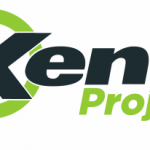Recently, during VMworld US 2018, VMware has celebrated the 20 years of the company.
But there is another virtualization project that has a lot of history like VMware: the Xen Project and this October marks our 15th anniversary.
On October 2003, Ian Pratt (founder of the Xen Project) announces the first stable release of the Xen virtual machine monitor for x86, and port of Linux 2.4.22 as a guest OS.
It was one of the most popular open source hypervisors and amasses more than 10 million users; but now there is a clear rise of KVM and also Amazon AWS has announced to adopt a home-brewed KVM as new hypervisor instead of the home-brewed Xen.
But still, at least in the public cloud and some specific market, the numbers remain high.
“Xen started life at the University of Cambridge Computer Laboratory, as part of the XenoServers research project to build a public computing infrastructure on the Internet. It’s been fantastic to see the impact of Xen, and the role it’s played at the heart of what we now call Infrastructure as a Service Cloud Computing. It’s been an incredible journey from Xen’s early beginnings in the University, to making our first open source release in 2003, to building a strong community of contributors around the project, and then Xen’s growth beyond server virtualization into end-user systems and now embedded devices. Xen is a great example of the power of open source to enable cooperation and drive technological progress.
– Ian Pratt, Founder and President at Bromium, and Xen Project Founder
From its beginnings, Xen technology focused on building a modular and flexible architecture, a high degree of customizability, and security. This security mindset from the outset led to inclusion of non-core security technologies, which eventually allowed the Xen Project to excel outside of the data center and be a trusted source for security and embedded vendors.
And the project it’s not dead. Also if Citrix Systems, Inc. acquires XenSource in August 2007 for $500 million, the entire Xen Project remain vital (and has huge usage in some vertials, like automotive).
The next Xen Project 4.12 release is set for March 2019.
The release continues to support the Xen Project’s efforts around security with cloud environments and rich features and architectural changes for automotive and embedded use cases. There will be:
- Deprivileged Device Model: Under tech preview in QEMU 3.0, the feature adds extra restrictions to a device model running in domain 0 in order to prevent a compromised device model to attack the rest of the system.
- Capability to compile a PV-only version of Xen giving cloud providers simplified management, reducing the surface of attack, and the ability to build a Xen Project hypervisor configuration with no “classic” PV support at all.
- Xen to boot multiple domains in parallel on Arm, in addition to dom0 enabling booting of domains in less than 1 second. This is the first step towards a dom0-less Xen, which impacts statically configured embedded systems that require very fast boot times.
- Reduction of codesize to 46 KSLOC for safety certification and the first phase of making the codebase MISRA C compliant.
- MISRA C is a set of software development guidelines for the C programming language developed by the Motor Industry Software Reliability Association with the aim to facilitate code safety, security, portability, and reliability in the context of embedded systems.













